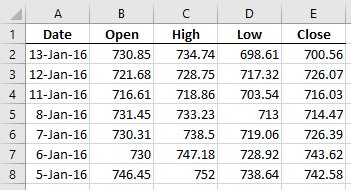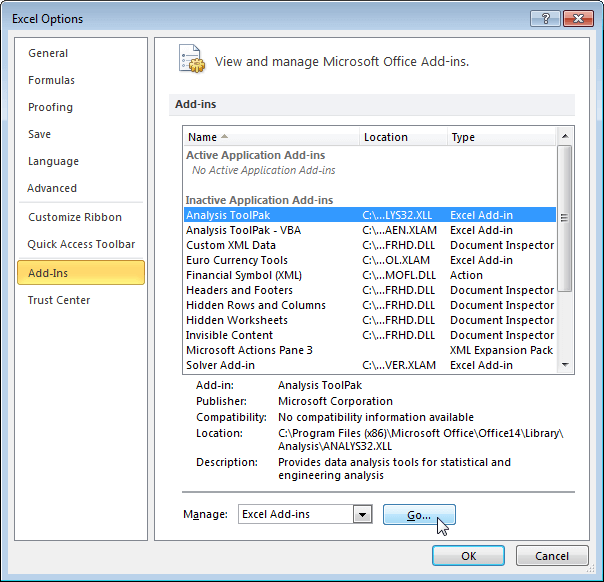

- #How to perform statistical analysis in excel how to#
- #How to perform statistical analysis in excel series#
They’re useful for analyzing and spotting trends in data related to performance, like customer support and seasonal fluctuations, or to highlight high or low values.
#How to perform statistical analysis in excel series#
Your browser does not support the video tag.įor more granular results, you can combine this with other features such as sparklines, which are tiny line charts that display your data from a series of values.
#How to perform statistical analysis in excel how to#
The example below, shows how to create a conditional formatting rule in a dataset of NPS scores: “If the value is greater than 8, color the cell green”. For instance, you might want to use this rule to add a color gradient to NPS scores, to easily identify promoters, passives, and detractors. Conditional FormattingĬonditional formatting in Excel automatically highlights cells using colors based on predefined rules, making it easy for you to identify different data. In the final pivot table, above, sentiment data has been summarized in columns and topic data in rows, and Excel has automatically calculated the totals. In this example, below, product reviews previously classified by topic and sentiment using MonkeyLearn (we’ll explain this later), are summarized in a pivot table show the number of Positive, Negative, and Neutral opinions for each business aspect (Ease of Use, Performance, Features, and more): Your browser does not support the video tag.

With a clear question in mind, you’ll have a better idea of the data to include. The flexibility to blend information also makes it easy to spot trends that might otherwise go unnoticed.īefore building a pivot table, decide on the final outcome: what are you trying to understand? Maybe you want to know which product was more popular during the summer season or identify segments of customers based on purchasing behavior. You can quickly build a pivot table by dragging and dropping fields and rearranging them without needing to write any formulas. Otherwise known as cross-tabulation, pivot tables are used to summarize (or slice) data so that you can focus on specific aspects that you want to explore in more depth. Pivot tables are one Excel’s most powerful features for data analysis.

Applying filters to data allows you to easily view what's relevant to you. It’s also the easiest place to start your data analysis, so let’s take a look at some of the top Excel functions, below: Filter Your Dataįilters help you narrow down a large dataset by grouping data based on different criteria. Excel is one of the most popular and reliable tools for managing and analyzing business data and discovering trends in large data sets. Take your Data Analysis in Excel to the Next Level with No-Code AIīusinesses collect both quantitative and qualitative data and often export this data to Excel, ready for analysis.Perform Complex Data Analysis with the Analysis Toolpak.In this article, we’ll focus on how to analyze your data in Excel using various functions, and Excel add-ins, then we’ll introduce you to a simple way of analyzing unstructured data in Excel. It’s the process of collecting, analyzing, and interpreting information, using various data analysis tools to extract value and create compelling visualizations to support decision-making.Įxcel performs exceptionally well when it comes to analyzing structured data (numbers, scores, groups, etc).

Data analysis is at the core of every successful business, whether analyzing performance, team processes, customer behavior, or market trends.


 0 kommentar(er)
0 kommentar(er)
